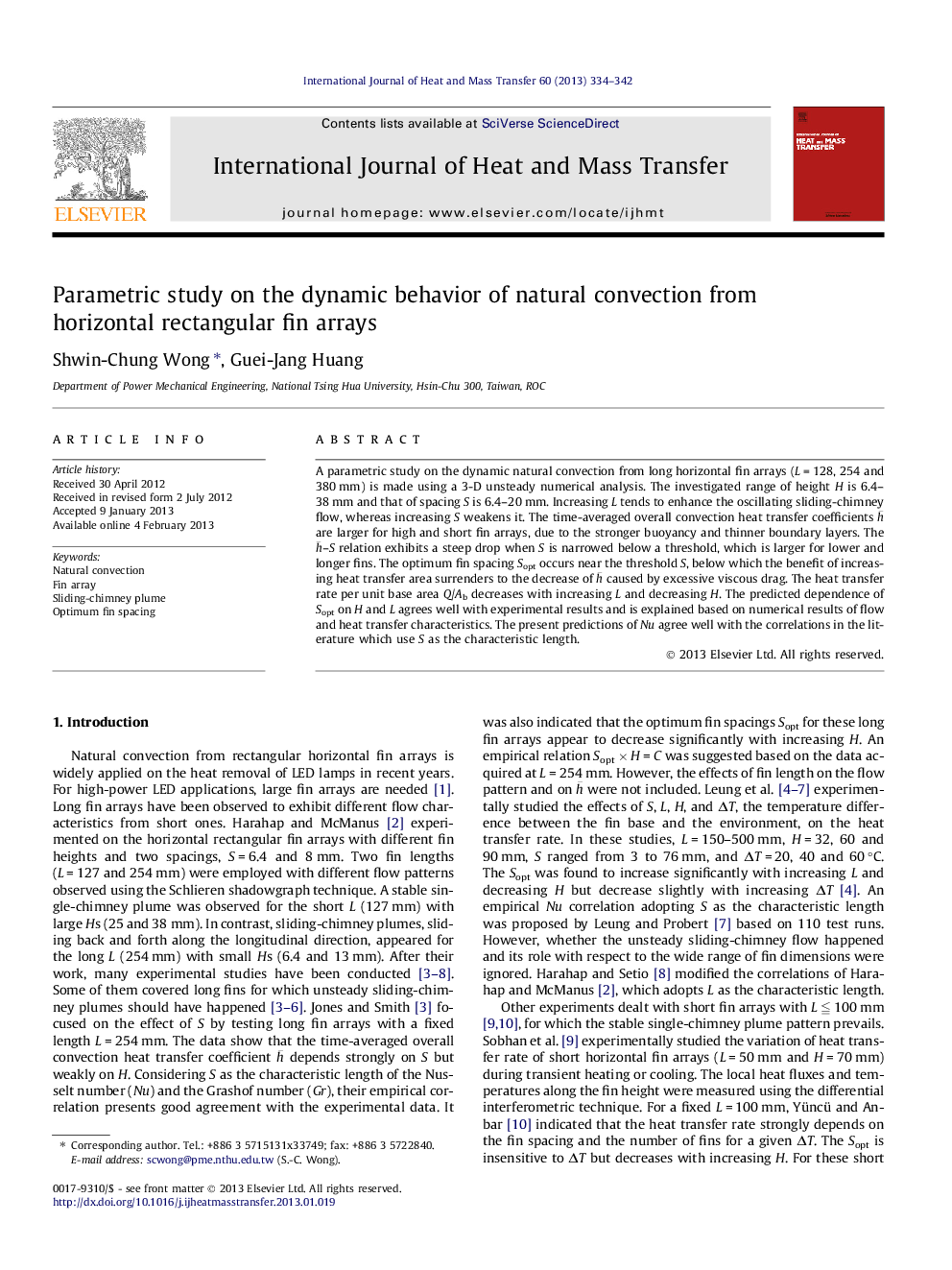| Article ID | Journal | Published Year | Pages | File Type |
|---|---|---|---|---|
| 658306 | International Journal of Heat and Mass Transfer | 2013 | 9 Pages |
A parametric study on the dynamic natural convection from long horizontal fin arrays (L = 128, 254 and 380 mm) is made using a 3-D unsteady numerical analysis. The investigated range of height H is 6.4–38 mm and that of spacing S is 6.4–20 mm. Increasing L tends to enhance the oscillating sliding-chimney flow, whereas increasing S weakens it. The time-averaged overall convection heat transfer coefficients h¯ are larger for high and short fin arrays, due to the stronger buoyancy and thinner boundary layers. The h¯–S relation exhibits a steep drop when S is narrowed below a threshold, which is larger for lower and longer fins. The optimum fin spacing Sopt occurs near the threshold S , below which the benefit of increasing heat transfer area surrenders to the decrease of h¯ caused by excessive viscous drag. The heat transfer rate per unit base area Q/Ab decreases with increasing L and decreasing H. The predicted dependence of Sopt on H and L agrees well with experimental results and is explained based on numerical results of flow and heat transfer characteristics. The present predictions of Nu agree well with the correlations in the literature which use S as the characteristic length.
